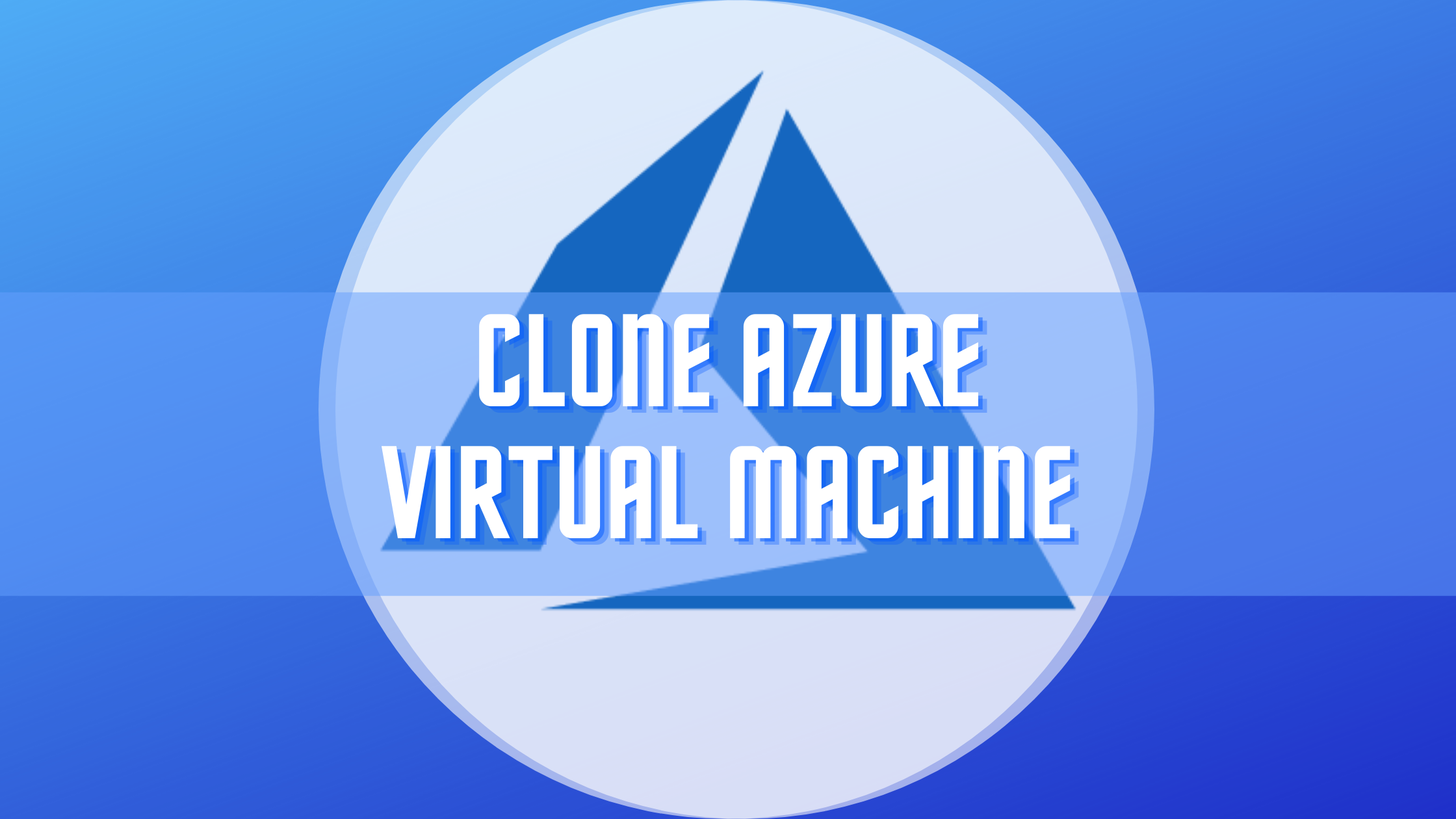Overview
In the previous article of this two-part series, we have demonstrated Azure Virtual Machine cloning using the Azure portal. If you have not seen that article, click on the link above and come back to this part as you may want to use the GUI way of cloning as most Azure administrators like the GUI method as it will cover most of the things graphically and easy for you to follow. If you are a PowerShell script person, you continue reading and creating the VM clone, taking the given script, modifying the parameters, and applying it to your environment or need. Guess what, you clone Azure Virtual Machine without any difference from the GUI method.
The snapshot name is the same as the Azure portal method of creating clone and I thought we do not use the same snapshot for this article. But I changed my mind as it will be easy for advanced Azure administrators, but it would be hard to follow for new Azure administrators as they might not know how the snapshot created and the steps to follow. Creating a snapshot for this article would also help viewers not go back and forth between parts 1 and 2 to create a snapshot.
In this part 2 of the two-part article, we will look at creating snapshots of OS and Data disks, a deep explanation about each command on the PowerShell script given on the line above it. When you are ready, let’s look at this demonstration’s breeze, and bingo, the Azure cloned VM is ready to use.
Clone Azure Virtual Machine using PowerShell
The virtual machine used in part 1 to create cloned VM is the one we will use here to create a clone on a new resource group. The Azure VM that we are cloning with PowerShell is the one shown in the below screenshot. We will use the same method to create a snapshot for this demonstration, also. I would recommend following the same steps that I have outlined below for creating a clone using PowerShell.
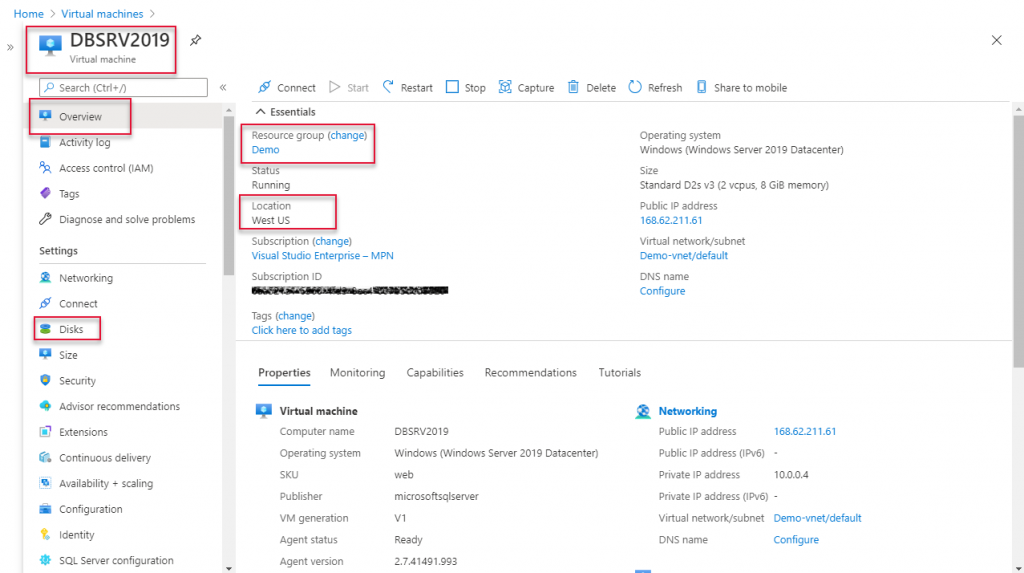
On the Virtual machine management page, click disks at the left side navigation, and you would find two disks. One disk is the OS disk, and another is the Data disk. If you have only one disk, i.e., OS disk, take a snapshot of the OS disk and don’t run the script’s data disk-related commands. As most VM uses one or more data disks, I have decided to demonstrate the cloning for an Azure VM where the data disk is included.

As we will create a snapshot for the OS disk first, click the OS disk on top and create a snapshot.

On the OS disk overview page, click Create snapshot, as shown in the screen below.

Create a new resource group which is relevant to your scenario,
Type a name for the snapshot
Select the storage type and click the Review + create button.

Verify the validation is passed on the review page and click create to create a snapshot of the Virtual Machine’s OS disk.

Once the OS disk snapshot deployment is complete, you would see a deployment status, as shown below.

We have created a snapshot of the OS disk successfully. The next step is to create a snapshot of the Data disk. Go to the disks page of VM, and you would find the data disk and select it.

On the Data disk overview page, the same as we did the OS disk snapshot, click Create snapshot to create this disk’s snapshot.

Create a new resource group which is relevant to your scenario,
Type a name for the snapshot
Select the storage type and click the Review + create button.

Verify the validation is passed on the review page and click create to create a snapshot of the Virtual Machine’s Data disk

The Data disk snapshot was created successfully. The below screenshot shows that deployment is complete. So we have completed creating the OS disk and the Data Disk snapshots. The next step is to create a script and run it on the cloud shell.

As shown in the screen capture below, click on the cloud shell icon to open the cloud shell on the Azure portal. You can log in to Azure Powershell ISE and run the script. But the cloud shell is good enough for this demonstration.
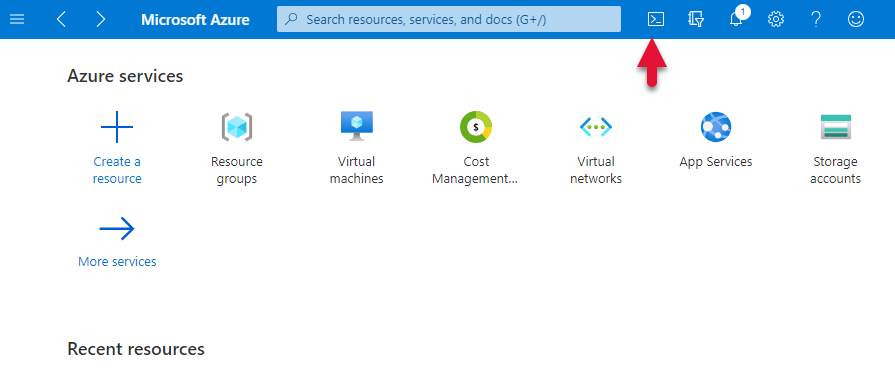
The below script is for the demonstration. I would recommend you modify the script as per your need. I have given the illustration of each command on top of the command.
# Replace the Subscription ID matching to your Azure subscription
Select-AzSubscription -SubscriptionId '7xx23xxx-5874-7da5-b65c-a37b4e78ff23'
# Assign Resource Group name where the snapshots have been created.
$RGName ='Clone-Demo-Shell'
# Assign snapshot name of the OS disk (provided on creating snapshot) to a variable
$OSSnapshotName = 'DBSRV2019-OSDISK-SnapShot'
# Assign a Managed OS Disk name to a variable
$OSDiskName = 'DBSRV2019-OSDISK-Managed_Disk-Shell'
# Choose between Standard_LRS and Premium_LRS
$StorageType = 'Standard_LRS'
# Get the value of Geo location from the snapshot and assign the value to GeoLocation variable
$GeoLocation = 'westus'
# Retrieve the values of snapshot for the OS Snapshot
$OSSnapshot = Get-AzSnapshot -ResourceGroupName $RGName -SnapshotName $OSSnapshotName
# Create a configurable OS disk object from the details of storage type Geo Location and snapshot ID
$OSDiskConfig = New-AzDiskConfig -AccountType $StorageType -Location $GeoLocation -CreateOption Copy -SourceResourceId $OSSnapshot.Id
# Create a Managed OS Disk from the OS disk Configuration
$OSDisk = New-AzDisk -Disk $OSdiskConfig -ResourceGroupName $RGName -DiskName $OSDiskName
# Assign snapshot name of the data disk that has been provided on creating snapshot
$DatasnapshotName = 'DBSRV2019-DataDisk-Snapshot'
# Assign a Managed Data Disk name to a variable
$DatadiskName = 'DBSRV2019-DataDisk-ManagedDisk-Shell'
# Retrieve the values of snapshot for the Data Snapshot
$DataSnapshot = Get-AzSnapshot -ResourceGroupName $RGName -SnapshotName $DatasnapshotName
# Create a configurable data disk object from the details of storage type Geo Location and snapshot ID
$DatadiskConfig = New-AzDiskConfig -AccountType $StorageType -Location $geolocation -CreateOption Copy -SourceResourceId $DataSnapshot.Id
# Create a Managed Data Disk from the data disk Configuration
$Datadisk = New-AzDisk -Disk $DatadiskConfig -ResourceGroupName $RGName -DiskName $DataDiskName
# Assign the value of virtual network name to VNetName variable (replace the name with the one that your virtual network name)
$VNetName = 'Demo-vnet'
# Assign a variable as the Identity of the VM
$VMIdentity = 'DBSRV2019-Clone-Shell'
# Assign VM size ( for more VM sizes run Get-AzureRmVmSize with location name)
$VMSize = 'Standard_D4s_v3'
# Create a public IP and assign static IP address
$pip = New-AzPublicIpAddress -Name "ClonepublicIP$(Get-Random)" -ResourceGroupName $RGName -Location $GeoLocation -AllocationMethod Static
# Create an inbound network security group rule for port 3389
$nsgRuleRDP = New-AzNetworkSecurityRuleConfig -Name CloneNetworkSecurityGroupRuleRDP -Protocol Tcp -Direction Inbound -Priority 1000 -SourceAddressPrefix * -SourcePortRange * -DestinationAddressPrefix * -DestinationPortRange 3389 -Access Allow
# Create a network security group
$nsg = New-AzNetworkSecurityGroup -ResourceGroupName $RGName -Location $geolocation -Name CloneNetworkSecurityGroup -SecurityRules $nsgRuleRDP
# The VNET assigned to the clone VM has to be same as Source VM resource Group
$RGNameVnet ='Demo'
# Retrieve the Virtual network details with the Virtual network residing resource group
$vnet = Get-AzVirtualNetwork -Name $VNetName -ResourceGroupName $RGNameVnet
# Create a Network Interface Card
$nic = New-AzNetworkInterface -Name CloneNic -ResourceGroupName $RGName -Location $GeoLocation -SubnetId $vnet.Subnets[0].Id -PublicIpAddressId $pip.Id -NetworkSecurityGroupId $nsg.Id
# Create and assign the value to Virtual machine varriable with the VM identity and VM size
$VirtualMachine = New-AzVMConfig -VMName $VMIdentity -VMSize $VMSize
# Attach Data Disk to the confirguration with the datadisk.id from the data disk maanged disk
$VirtualMachine = Add-AzVMDataDisk -VM $VirtualMachine -Name $dataDiskName -ManagedDiskId $datadisk.id -Lun "0" -CreateOption "Attach"
# Attach OS Disk to the confirguration with the osdisk.id from the OS managed disk and type of operating system on the snapshot
$VirtualMachine = Set-AzVMOSDisk -VM $VirtualMachine -ManagedDiskId $osdisk.Id -CreateOption Attach -Windows
# Add virtual network interface using the NIC ID and assign the value to $VirtualMachine
$VirtualMachine = Add-AzVMNetworkInterface -VM $VirtualMachine -Id $nic.Id
# Create the virtual machine with above details and Managed Disks
New-AzVM -VM $VirtualMachine -ResourceGroupName $RGName -Location $GeoLocationI have run the above script on the cloud shell, and you can see at the end of the script output that the Virtual Machine is created successfully.
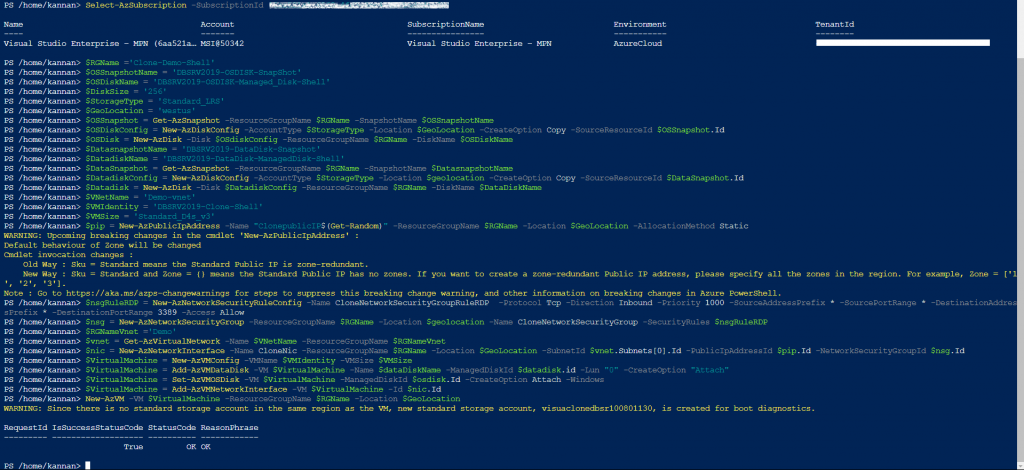
The newly created cloned VM overview page is shown in the screen capture below. Click connect and use the same credentials that you are using for the original VM to RDP to this cloned Virtual Machine.

The RDP screen is shown in the below image that the cloned virtual machine that we have created.
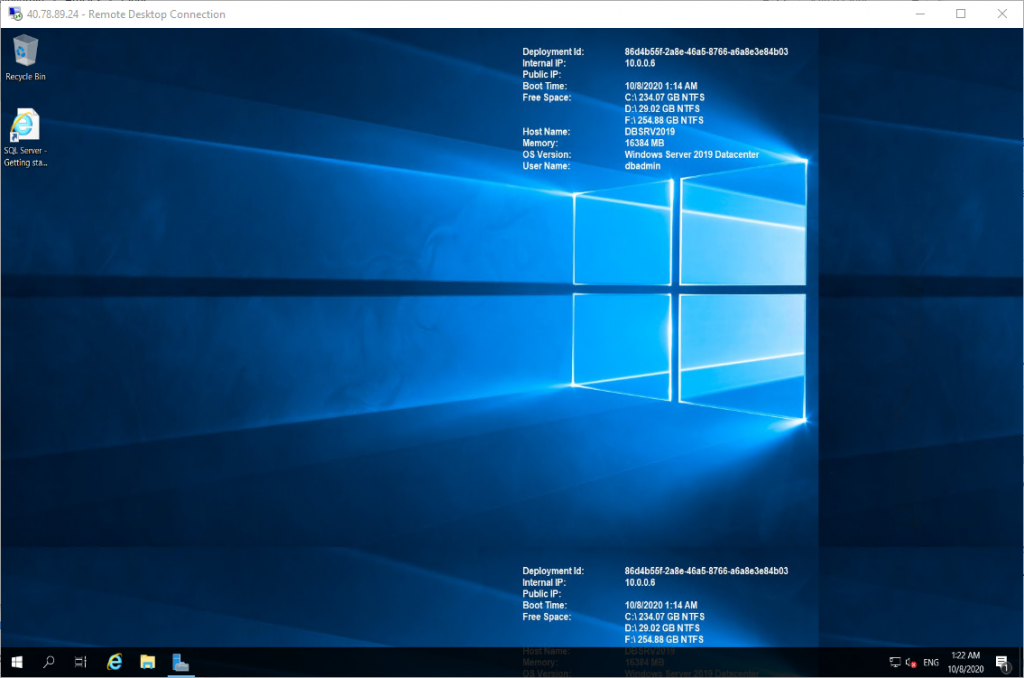
Conclusion
Here is the end of a two-part article of clone Azure virtual machine from the original one using the Azure portal and Azure cloud shell (using PowerShell). We have achieved the same result by using the method in the first part and the Azure portal method or GUI way of creating VM and, in the second part, also Cloudshell way of creating Azure VM. So use the method you are comfortable with and your use case.
I’m delighted to create this article to post it on my blog. You may have some questions or feedback on this article. If you have any, send on the comment below to respond to them at the earliest.
How to Easily Clone a Virtual Machine in Azure Using Portal – Part 1

